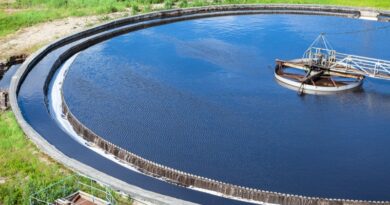Asia-Pacific to lead growth in point-of-use water treatment systems market

Increasing water contamination in the wake of growing demand for clean drinking water is expected to push up the global point-of-use water treatment systems market with the Asia-Pacific region projected to lead the growth.
The global point-of-use water treatment systems market size is projected to grow from $16.2 billion in 2021 to $25.3 billion by 2026, at a CAGR of 9.3 per cent on the back of growing human population, enhanced awareness about benefits of water treatment and technological innovations in the water treatment industry, a new research report states.
The APAC region is seen as the most active market as growing population in these countries presents a huge customer base. The growth of these industries is backed by the increasing public and private sector investments, increasing population, growing economy, and high disposable incomes of both value and volume from 2021 to 2026. Growing population and rapid urbanization are among the key factors propelling industry expansion in the region, during the forecast period, the report by MarketsandMarkets Research Pvt Ltd said.
By application, the residential sector is projected to be the largest segment in the point-of-use water treatment systems market. The residential application mainly encompasses the use of point-of-use water treatment systems to produce potable water for domestic consumption.
The residential water treatment application is expected to witness high growth due to the increasing need for treated drinking water, removal of unpleasant taste, odor, and discoloration, suspended solids, biodegradable organics, and pathogenic bacterial.
According to the research, based on device, counter-top units are projected to be the largest segment in the point-of-use water treatment systems market. Counter-top units are also known as on-counter filters.
Counter-top units operate on reverse osmosis as well as activated carbon technologies. These filters reduce contaminants, such as bacteria, dirt, chlorine, particulates, rust, lead, mercury, sediment, copper, benzene, cadmium, and cysts. The major advantage of counter-top units is that they do not require frequent filter changes. However, they require some plumbing. Counter-top units do not chill water, unlike pitcher water filters.
By technology, reverse osmosis is projected to be the largest segment in the point-of-use water treatment systems market. Reverse osmosis is a process of producing pure water through a semipermeable membrane, wherein the water is pumped at high pressure through this membrane, which separates inorganic minerals (such as radium, sulfate, calcium, magnesium, potassium, sodium, nitrate, fluoride, and phosphorous), organic compounds (including pesticides), and other impurities from water. Usually, reverse osmosis systems are combined with a mechanical and activated carbon filter.



